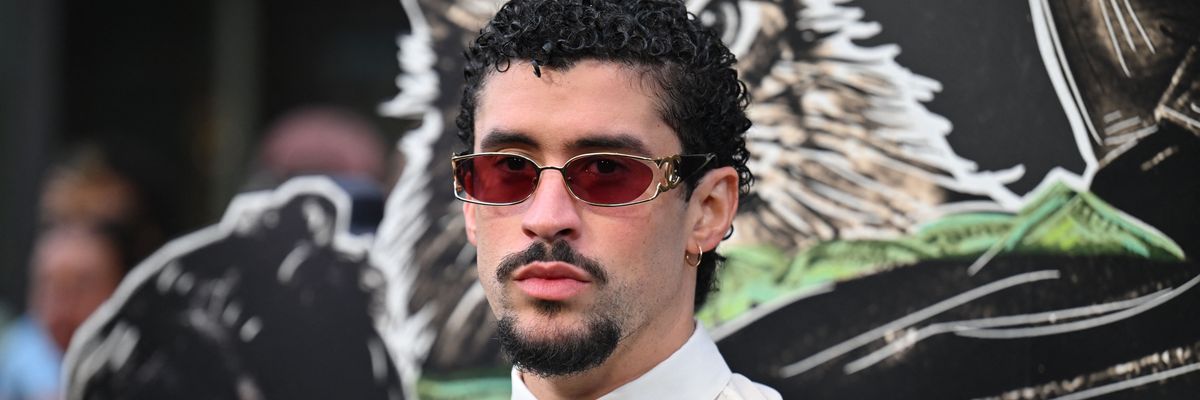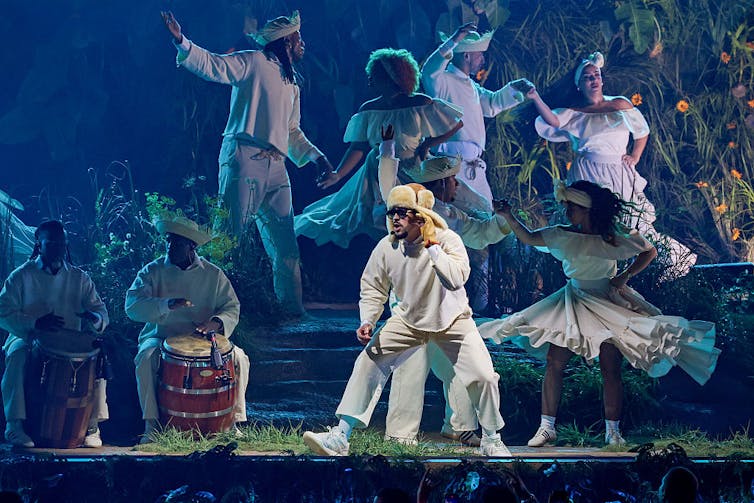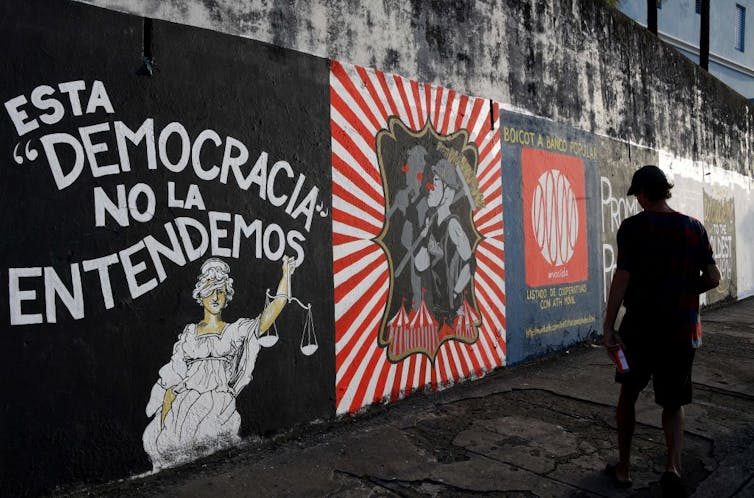
![]() Catholic Hysteria Against Pagans
Catholic Hysteria Against Pagans
What is wrong with a sacred tradition that attempts to predict the future? What dangers lurk for those who host feasts are not under Church approved? What is wrong with making images of gods and goddesses? What will happen to you? Why not use chemical hallucinogens to heal and create altered states? Why is it so terrible to leave food and clothing for those who died in case they need them? Why not plot and scheme with elves, dwarfs, giants and trolls? Why must there be only one soul and not two or three? These beliefs and practices were so dangerous that the Catholic Church saw fit to smash images, burn down libraries, and torch forests to keep people from practicing these things? In my article, I link the reactions of the Catholic Church to totalitarian practices centuries before what anti-communists accuse Stalin of. In spite of centuries of effort, pagan practices persisted through the Middle Ages. What was it that a pagan life continued to offer people that the Catholic Church could not destroy? The image of the Alexandrian library before it was destroyed by Christian mobs.
The characteristics of totalitarianism
In my last article, “Dancing with the Devil,” I briefly defined totalitarianism as a loaded political vice word that the CIA saved mostly for the Communism of the Soviet Union and fascism in Germany. Usually the charge of “totalitarianism” includes at least the following:
- abolition of the right to freedom of speech, assembly and religious worship
- elimination of all political parties other than the ruling party;
- subordination of all economic and social life to structural control of the single party bureaucracy;
- liquidation of free enterprise;
- destruction of all independent trade unions and creation of labor organizations servile to the totalitarian state;
- establishment of concentration camps and the use of slave labor;
- utter disregard for an independent judicial system;
- social demagogy around race and class;
- expansion of the military;
- reduction of parliamentary bodies to rubber-stamp status;
- establishment of a system of nationwide espionage and secret police;
- censorship of the press and media;
- disregard for the rights of other nations and disregard of treaties; and
- maintenance and encouragement of fifth columns abroad
Claim of the article: The manner in which the Catholic Church treated pagans have totalitarian seeds
In my last article, I argued that the charges of totalitarianism against the Soviet Union were ridiculous. By comparison, the Catholic Church had a much more expanded and integrated totalitarian system. Over the centuries they destroyed pagan sacred texts, shattered sacred groves around springs, cut down sacred forests and killed and ate their sacred animals. Their process was to:
- Reshape external collective behavior – public confessions
- Reshape external individual behavior – secret confession annually to a priest
- Internal individual behavior – importance of conscience.
This article is based on three books, two by Claude Lecouteux including Return of the Dead and Witches, Werewolves and Faires as well as The Pagan Middle Ages edited by Ludo Milis.
Forbidden Pagan Practices
In the book The Pagan Middle Ages the author names the following practices as forbidden:
- soothsaying – fate, astrology (as opposed to having faith and assuming free will)
- sorcery (as opposed to praying to God);
- unapproved feasting outside the church;
- reverence for statues (instead of praying to an imageless God;
- using charms against disease; using chemical stimulants like chewing laurel leaves for altered states or herbs such as mandrake, poppy, henbane and nightshade to stimulate the nervous system and cause hallucinations; Catholic rulers approved of states including self-flagellation and sleep deprivation and the use of holy unctions, confession and penance;
- saturating the senses (as opposed to sobriety);
- burying the dead with important grave goods or with luxurious clothing (the spiritual world needs no material things);
- placing food in the graves (the spiritual world needs no material things);
- animal sacrifice;
- use of remedies;
- too much leisure as opposed to hard work;
- imagining divinity could exist outside a single god. Lower forms beings —dwarves, giants, trolls, elves and white witches – were much harder to fight against than gods and goddesses because they were seldom paid great attention to.
- believing in the return of the dead (as opposed to going to heaven, hell or purgatory);
- venerating the ancestors;
- believing in the existence of two or three souls instead of one; and
- enjoyment of sex.
Between the fifth and the twelfth centuries books of penance were compiled as judgment guides about sex:
- distinctions made between adulterous men and adulterous women;
- age categories introduced;
- whether the offender was a cleric or a laymen, freeman or self;
- area where adultery took place;
- when sex took place (sacred holidays, menstruation);
- the sexual position; and
- the number of partners.
These are the very things for which the so-called totalitarianism of Russia would be attacked for. Let us see what the pagans believed.
Strategy of the Catholic Church
At first, the small numbers of the Church forced it to be selective in their approach. They went first to the rulers. The rulers had to grant permission to preach in his territory. Furthermore, before converting, the ruler had to be sure they had the support of nobles. They only went after the slaves or serfs or the peasants at the end. Finally, the missionary could not easily invent new words. They had to use existing native words but give them a new meaning.
The Importance of the Ancestor’s Pagans in the Middle Ages
What happens to people when they die? Catholics say you get a one-way ticket to heaven, hell or purgatory. But can you come back? People in the Middle Ages definitely believed you could return from the dead. In fact, they had no fear of death; they dreaded the dead. The true destiny of a dead person was to become an ancestor—to reincarnate or resurrect – to continue to live among his them. Reverence for the ancestors was of great importance to paganism. The dead are connected to their land, the place where they spent their life and they do not want to be separated from it. The dead need the help of the living. In the Middle Ages, the center of all activity remains the farm, and the family is not limited to the living. The tomb was placed within the borders of the farm. There was no reason to separate the dead from the familial community. These pagans lacked all knowledge of the idea of solitude of we moderns. For them the worst penalty was not death but expulsion of the group. The Church worked very hard to suppress this belief that the dead could return. They only partly succeeded. Why did the church not want the people and the ancestors to have a relationship? What benefits does the Church receive from these spiritual politics? Le Goff in his book The Birth of Purgatory showed the profound metamorphosis that the dead underwent in the 11th and 12th century.
Where, When and Who of the Dead Returned?
Claude Lecouteux tells us that for as long as humans have existed they have spoken of shades of the departed who return to trouble the living. In fact, in pre-Christian and even Christian times pagans and their peasant base said the dead could come back, either of their own volition or by being evoked. Castles clinging to the tops of peaks of mountains, forests covered in fog are places where we are likely to see apparitions of the dead. We are likely to see them in rural areas rather than in cities. The mountains were understood as an intermediary between humans and gods. Pagans claimed to have seen them on the longest nights of the year. The mountain dweller and the sailor have experienced ghosts and believed in them because mountains and water were believed to be bodies that are bridges between the material to the spiritual worlds.
Not everyone comes back from the dead. It is those souls who have not integrated well into the community that are claimed to return. Claude Lecouteux tells us a Polish ethnologist analyzed 500 cases of dead people who became revenants and drew up the following demographics about who came back.
| The Dead | Number of cases | Percentages |
| Drowning victims | 101 | 20.2 |
| Unbaptized children | 90 | 18 |
| Abortions | 55 | 11 |
| Suicides | 43 | 8,6 |
| Spouses who died on their wedding day | 40 | 8 |
| Dead fetuses | 38 | 7.6 |
| Those dying in violent or unnatural deaths | 15 | 3 |
| Women who died after giving birth but before they arose from the same bed | 14 | 2.8 |
| Fiancées who died right before the wedding | 14 | 2.8 |
| Women who died in labor | 10 | 2 |
| Other cases | 42 | 8.4 |
| Total | 500 | 100 |
How far do revenants travel? Usually not far. They are mostly attached to their homes and manifest across their lands (affecting the growth of crops). It is rare for one to attack directly the members of their family. Revenants lived in oral and folk tradition anchored firmly in local culture. They would return and wander as apparitions.
Fear of the Dead
In Rome the deceased were regarded as impure and dangerous. It was necessary to gain the good graces of the dead if they would commit more than one misdeed. The deceased were believed to be the cause of epidemics and cases of madness and possession. In Germany the dead were bound before burial. Why? To prevent them from leaving their tombs. The mounds were solid. Earth and good-sized stones were piled up on top of a wooden chamber framed by standing stones as if it were necessary to keep the dead from leaving. Discoveries made in Scandinavian peat bogs had revealed bodies covered with branches, and logs of stones to prevent escape.
Preparation and Handling of the Body
For those preparing the body, it was necessary to protect themselves from evil and to protect the dead person’s spirit from leaving the corpse. The blindfold over the eyes protected those present from the evil eye. The nostrils and the ass were corked with wax. Nails were hammered into the feet of a corpse to prevent any roving after they died. The custom of keeping vigil over the dead is ancient. Vigils were accompanied by singing, spinning and dancing.
Who Were the Revenants?
Claude Lecouteux wrote that revenants are believed to return from the dead in physical form. The revertant dead man is able to intervene physically in the world of the living. He fights like a man and eats and sleeps like a man. Revenants continue on sensuously into the next world. They are believed not to decay and they continue to meddle in people’s lives. Revenants were not evanescent. They were not images or mists, but flesh and blood individuals. They were imagined to be large, alarming, sometimes black in color and more harmful. They inhabit mounds and are unable to find their peace through return. The strengths of the dead were greater than when they were living. When a body was disintegrated in order to be destroyed, it very often seemed as large as an ox.
When the revenant walks on top of a roof, it is imagined to barely avoid collapsing the structure. The mental powers of the dead are thought to be increased. Lecouteux claims people have also encountered revenants in animal form such as an ox and seal. The revenant seeks to attract people outside. They stay on the roof and do not seem capable of operating inside the house. The house was considered a good refuge for the family if the door was closed. Revenants can avenge themselves. The dead who caused harm did not get off when they died. The revenants were connected to fertility. They ravaged farms and could bring death to most of the household. They can cause harm to neighbors’ farms and make attacks on herdsman. In other words, whenever a revenant raged, the earth became a dessert, the earth no longer bore fruit.
The Challenge of Revenants to Christianity
The undead who have returned can be divided into two large categories depending on whether they had appeared to people in dreams or while awake. They are:
- corporal 3 dimensional – awake who are called revenants; and
- evanescent immaterial beings are known as ghosts – they can be ectoplasms, reflections, or images – rather than being physical, ghosts come only in dreams.
Revenants offer a challenge to the Christian division between the kingdom of the dead and the living. They open a third way with respect to existence beyond the grave. They create a challenge to Catholicism that installed a simple reward or punishment with three places – hell, purgatory and heaven.
Why Does the Study of Revenants Matter?
Revenants should be understood as far back in time as possible before its mutations and transformations due to the intrusion of the Church. The record of where these events is clearest is in Scandinavian society because Christianity penetrated there much later. More than any other people, Icelanders have preserved sagas that give us foresight of beliefs and practices in other places before the Church disrupted things. Claude’s work seeks to dissipate those shadows by letting the people speak of a bygone age for themselves again. In other countries Christianized earlier and with Christian suppression and the marginalization of paganism, the stories of revenants is difficult to sort out. Therefore, Lecouteux decided to study revenants in the Germanic countries from the 10th to the 13th centuries. In the north there was a transition – co-habitation of pagan and Christian and the coherence of the non-Christian culture were still distinguishable after the 13th century.
Christian Repression and Marginalization
Wanted revenants dead or alive!
Christians want to slam the door on reverence of the ancestors whether they are revenants or ghosts. Christianity encountered in Germany wished to exile the dead to a cemetery around the church starting in the 12th and demons and later became the site where witches were thought held century because of its pagan character. The mountains became the abode of the fairies their sabbaths. Around 1000 BCE, Burchard of Worms prohibited what was called “singing diabolical songs” as well as playing games and capers in the presence of the dead because they were pagan customs. Revenants were stripped of all physicality. All that really appeared were images, reflections and true copies that would later be called ghosts. Directives served to eliminate the reverence of the dead, a core feature of paganism. Whenever possible the saints replaced the ancestors and liturgical feasts replaced pagan festivals.
Controlling perception
At the same time the causes of the perception of the dead were all nailed down by Christianity. Everything had to come from God. There was no independence for ghosts or reverends. They were either:
- interventions from God in the form of miracles;
- diabolical acts of the devil including the creation of delusions;
- the untrusty nature of the senses due to idolatry or magic; and
- everyday untrustworthiness of the senses.
The theologians who played the most important role in the history of ghosts and revenants are Tertullian and St. Augustine. For the church, the deceased must have a time and a place, and there could be no wandering around. It was difficult for Christians nourished by the Bible and the church fathers to accept that people could reappear after their death. For them they went to either heaven of hell. When purgatory was established in the 13th century, this third place naturally became the residence of the dead who were not resting peacefully. With purgatory, the dead were banished into the beyond. The evolution that transformed revenants and ghosts into souls undergoing punishment for their sins. Please see Le Goff, The Birth of Purgatory.
As for dreams, pagans passed on to the Middle Ages a very elaborate dream decoding system where regular dreams were distinguished from visionary dreams. Under Christianity, this system was reduced to the rank of idolatry and was forbidden by the Church in 789 AD.
Spiritual politics of the Church
Now Lecouteux drew up a brief overview of the means the Church used to resolve the problem of revenants:
- they were discarded and their wandering nature and attributed to it to demons;
- human perception was implicated because the senses had been blinded;
- revenants were stripped of all physicality and became ghosts;
- little by little they were destined to be dismissed as fantasies, illusions or superstitions; and
- Revenants were gradually repressed into the realm of witchcraft.
The Church transformed the evil-doing dead into demons- for whom tutelary spirits and revenants were pagan devils. The harmful dead became trolls. These clerics had an excellent linguistic tool at their exposure. They only had to erase certain portions, details of the story to make the word draugr (living dead) disappear and replace it with troll. History would then concern itself only with the battles between man and a demon. There was a totalitarian desire to put everything in its place – to shut out the world between here and the beyond.
How Many Souls?
For Catholics, people have one soul. But for most of human history all the way back to the shamans, people had at least three. The soul is borrowed from the old Saxon German word “seele.” Soul did not exist in the Norse language. The idea of a single individual soul is foreign to Germanic paganism. Ancient Egypt religion speaks to us about the ka; the Greeks speak of daimon; the Romans tell us that every man has a genius and every woman a Juno.
The root of the belief in more than one soul is squarely painted in shamanistic concepts of the soul. The soul is a triple entity:
- lower soul dwells in the bones and leaves humans only at death;
- the second is not so solidly fixed in the body…it can leave the body during sleep without the sleeper’s awareness; and
- the third soul separates itself from the body at the time of death and appears to humans in the form of ghost.
These texts suggest that there are two ways of the soul leaving the body. One is involuntarily through sickness. The body must be in a critical state in order for the soul to become free. The second way is voluntary – through asceticism such as fasting sleep deprivation, discipline, mortification and exposure to cold.
The soul was more than the spirit. It was perceived as being reserved for ecstatic voyages to the next world. Stories claim that clerics rarely noted the wounds an individual brought back from an ecstatic voyage as a revenant because they didn’t want to see it. For Christians the soul cannot be marked in any way. The clerics wished to make people believe that ecstasy was a uniquely spiritual phenomenon. For pagans the other world was less the world of the gods and more the world of the dead. It is the reservoir of potentialities of each individual and each family. To the pre-Christian mindset, sleep permits the free movement of genies, spirits and doubles where distance is no obstacle. As long as the corpse of the dead had not completely decomposed, the double does not disappear. When the double is absent the body is extremely vulnerable. It must not be moved or touched or it would lead to death.
There is at least three types of souls in the Scandinavian sagas.
The fylga literally means female follower. She appears as a tutelary genie attached to the man and his family. A person can have several fylgas. It is closely linked to destiny in the Scandinavian tradition. Its primary mission is to protect the person to whom she has attached herself. It has a corporeity and it appears that the animal nature of the
She is linked to sleep and trance and they can travel. She cannot act physically. The fylga takes leave of a man before death while the hamr (see below) remains attached to the body until total disintegration
The hamr is the physical double. Certain individuals were born with the ability to double themselves. However, when the alter ego travels it runs risks, most notably that of not being able to reenter the body. The physical double—hamr is skilled at metamorphosis. The hugr roughly corresponds to the animus and spiritus. It is more or less independent of individuals. The following is a table which contrasts pagan practices with Christian interpretations.
| Pagan practice | Category of comparison | Christian Interpretation |
| A person is able to double themselves | Belief in doubles | An evil spirit takes him over |
| A person isolates himself from the community and has a vision quest | Meaning of out-of-the-way places | A demon throws them in an out-of-the-way place and abandons him there as if he were dead |
| Their double takes the form of a wolf | Place of the wolf | A demon puts themselves inside of the wolf |
| The person knows he has a wolf double at his disposal | Knowledge of this process | The human believes the wolf is an external being |
| The double reenters the world | Re-entrance into the physical world | The human is possessed and the holy man frees him by Christian exorcism |
Pagan Resistance
As hard as the Catholic Church tried, its hold was less complete than it was generally assumed. What is not true is that paganism disappeared because it was superstitious. Like any sacred tradition paganism had its superstitious wing and its more reasonable wing. The policy of the Church was to destroy pagan images while taking over and consecrating the temples.
In spite of everything, paganism could still seep into the spiritual landscape because it fulfilled certain religious functions for which Christianity was not concerned with:
- how to spur their husbands to more love;
- how love can be activated or reactivated;
- how sickness in loved ones can be cured;
- processes for venting hatred on enemies;
- how can childless produce children; and
- how to prevent a plague.
19th Century Decline of the Ancestors
The denser the communication network, the stronger the industrialization process became and the more widely pagan beliefs became marginalized. In addition to Christianity, breakup of the family unit during the 19th century helped to lead to less interest in the fate of the ancestors. Today a dead man is just that, a dead man and his wishes were no longer important. In England, the good man’s field was allowed to survive into the 17th century. This was a piece of land that was never plowed or planted and was left instead to be left fallow. No one harbored any doubt that it was reserved for some spirit or demon.
- The dead were expelled into the underworld;
- their decedents no longer felt responsible for meeting the requests of the dead ancestors; and
- The family no longer included the dead and the living in a single community.
Industrialization dealt a blow by shattering of the old familial structures and uprooting individuals. Oral transmission is weakened further. People no longer died at home surrounded by family, but in hospitals and hospices from where they are taken to stone gardens on the periphery of the community of the living and are no longer huddled around a church. They are no longer cherished as before. Cemeteries are no longer meeting places where people go to share the latest news with the dead. People would sit in the cemeteries when important decisions were made. The door to the otherworld has closed and the beyond keeps our elders for eternity.
The Rise of Neopaganism
The Catholic Church and industrial capitalist society did not have the last word. The Romantic movement of the 19th century rebelled against both Christianity and the industrial revolution. Poets, artists and intellectuals sought to bring back Pan and pantheism. At the end of the 19th century there was great interest in renaissance magic and Western mystery tradition. This continued into the 20th century. After World War II interest in witchcraft and covens emerged first in Britain in the 1950s and then in the United States in the 1960s. Today Neopaganism is thriving in both countries.
The Bitter Totalitarian Harvest of the Catholic Middle Ages
Catholic totalitarianism attempted to control people by anxiety, fear and hatred of life. Let us return to the sixteen characteristics of paganism at the beginning of this article and try to understand the Church. In the first place there is a hatred of life. There is a condemnation of the celebration of leisure, feasting, saturating the senses and sex. Anything this-worldly is forbidden or looked at suspiciously. Secondly, there is a radical separation between spirituality and the material world. The use of charms or hallucinogens is condemned. When pagans buried their dead and feasted on the Day of the Dead, they left food and implements for the dead. This says that for pagans the veil between this world and the next is fluid, a matter of degree rather than kind. For the Catholic Church there is an absolute separation. Thirdly, the heads of the Catholic Church were obsessed with control. They could not tolerate any kind of independent flow between human beings and other spiritual beings. Soothsaying, sorcery, and the use of charms all suggest that spirituality is horizontal, plural, competitive and chaotic. The Church insisted that people narrow their focus to a single God and have faith that there is a time and place for everything. People go to heaven, hell or purgatory. They do not wander around independently. The Church insisted on having faith in an invisible God far away. Altered states of consciousness were only permissible if it made themselves miserable (flogging, sleep deprivation) in the process. Finally, Catholicism insisted that there could only be one soul rather than three, moving in and out of doubles. One soul stayed in one place until told to move on.
Why did people tolerate such a miserable set of beliefs and practices that the Catholic Church advocated? For one thing, the material life in the Middle Ages was difficult. Food production was erratic, disease was rampant, travel was difficult and feudal lords were selfish with had no social vision. The Catholic Church simply presented a spiritual cosmology that explained why people were miserable but the spiritual authorities wanted also to control the peasants and artisans because of the material resources they provided. On the other hand, pagan life in Greece and Rome was better for both artisans and peasants. It makes sense that a more life-affirming way of sacred life would go with better material circumstances.
Conclusion
I began this article by naming thirteen characteristics of what Cold War anti-communists accuse the Russians of under Stalin. After dismissing this as ridiculous I argue that the Catholic Church over the centuries is a much better candidate for a totalitarian rule. My claim in this article is the way Catholics treated pagans in the Middle Ages have totalitarian seeds. After naming sixteen characteristics of paganism that the Catholic Church objected to, I focus my article on three: return of the dead, veneration of the ancestors, and the plurality of souls. I describe how the Church’s obsession with controlling people insisted that there was to be no open gateway between life and death. The dead could not return. Instead they were assigned either heaven, hell or purgatory. So too, people did not have three souls but one a single one. There are no souls wandering around in astral life or the underworld. When pagan people claimed the contrary they were told they were deluded or fooled by the devil. Pagan beliefs became demonic.
I close my article by claiming that the Church’s attempt at totalitarian control was only partly successful and I argue for the loopholes in the Catholic assessment of people’s needs that allowed pagan beliefs to continue to survive on the margins of the Middle Ages. I also point out the rise of Neopaganism out of Romanticism created a renaissance of interest in paganism that has expanded through today. I ask why people allowed themselves to commit themselves to such an otherworldly, life-negating, hateful, narrow set of beliefs and practices. My answer is that at least as far as the Middle Ages it was the difficulty of material life. We could ask why people continued to let themselves be controlled by the Catholic Church even when life got better in the High Middle Ages. The answer is partly that the Church became less life-denying which made it possible to stay in the Church. In fact, it was the materialistic nature of the Catholic Church that partly explains the emergence Luther’s and Calvin’s protestant opposition.
Bruce Lerro has taught for 25 years as an adjunct college professor of psychology at Golden Gate University, Dominican University and Diablo Valley College in the San Francisco Bay Area. He has applied a Vygotskian socio-historical perspective to his three books found on Amazon. He is a co-founder, organizer and writer for Socialist Planning Beyond Capitalism. Read other articles by Bruce, or visit Bruce's website. 







